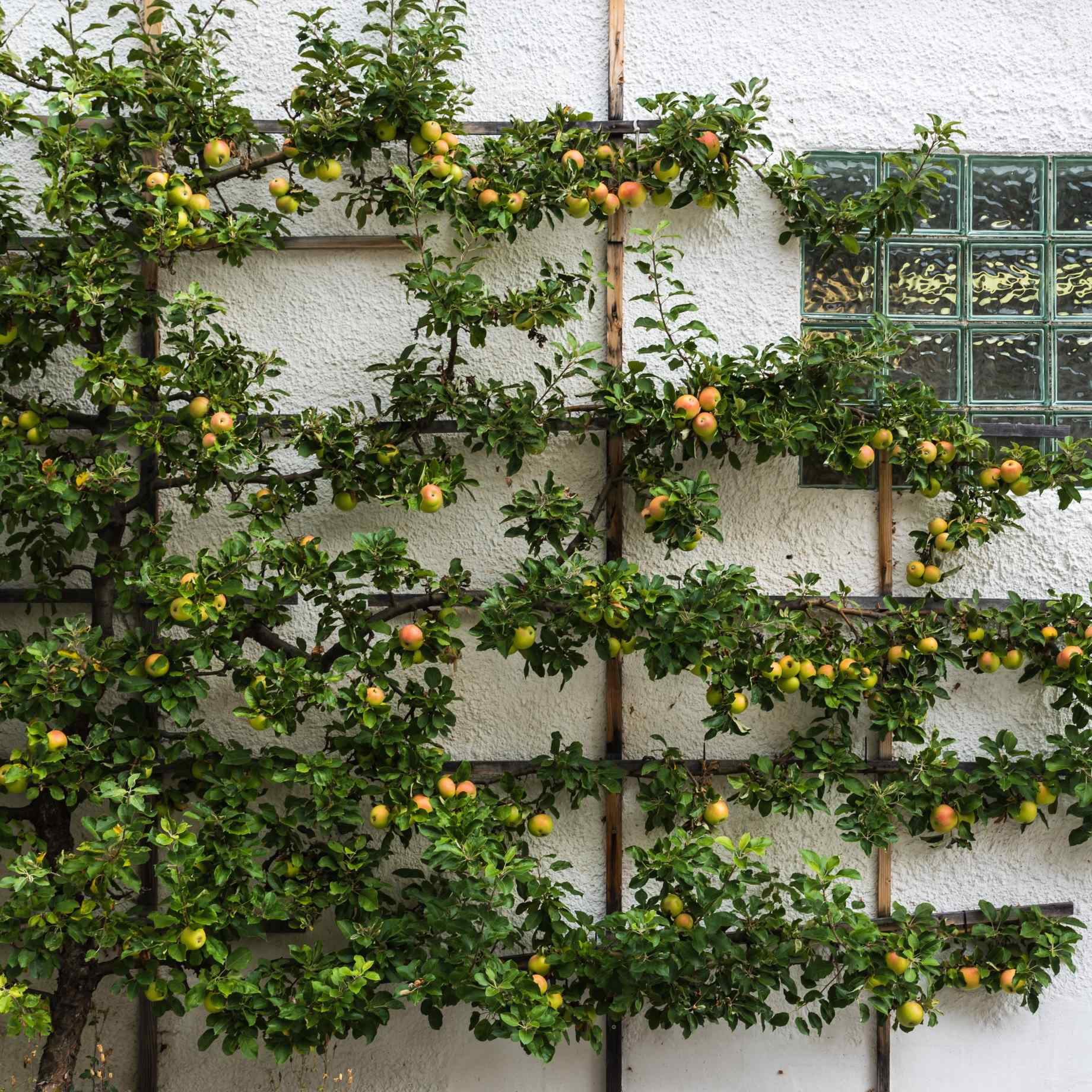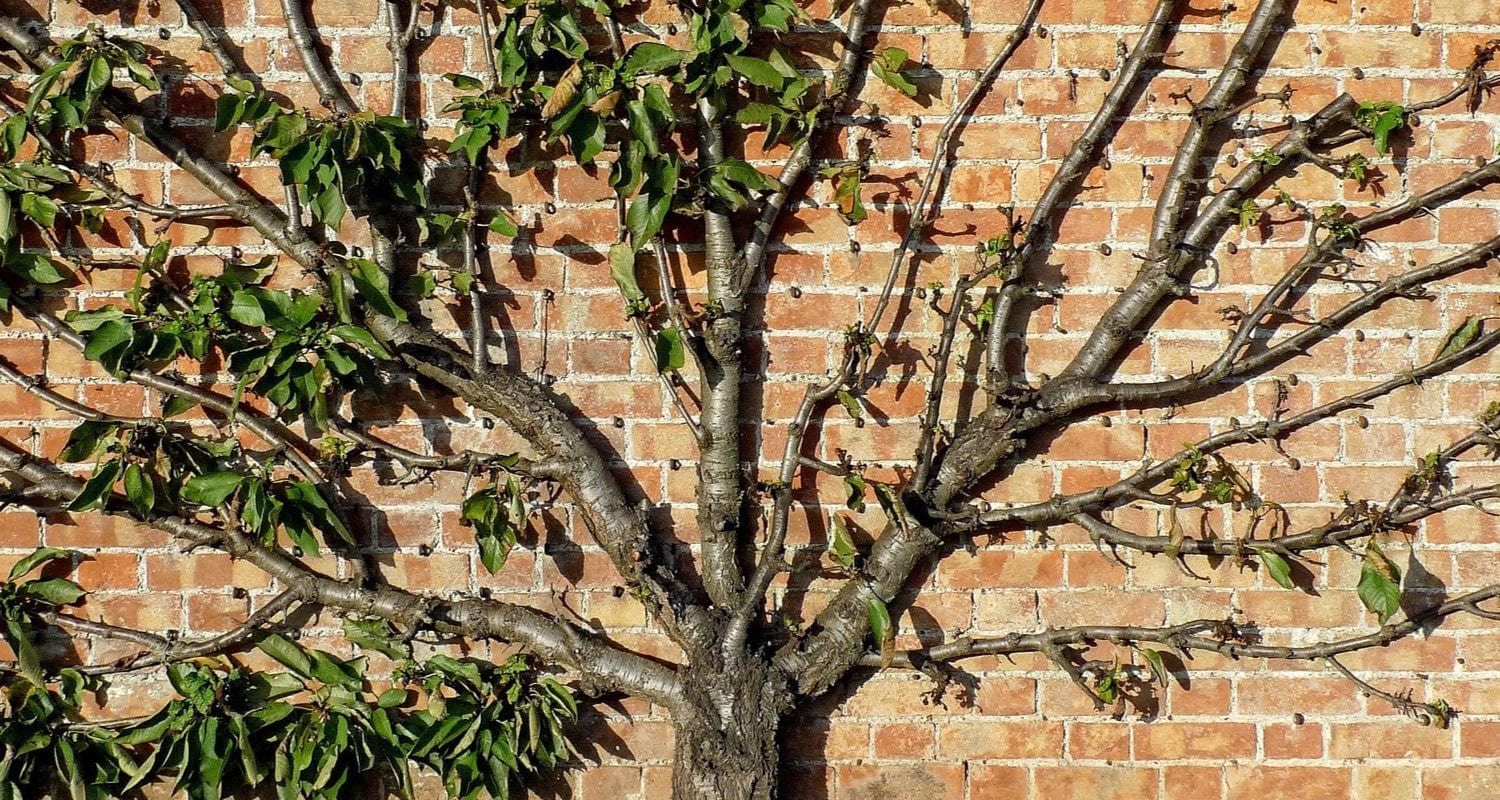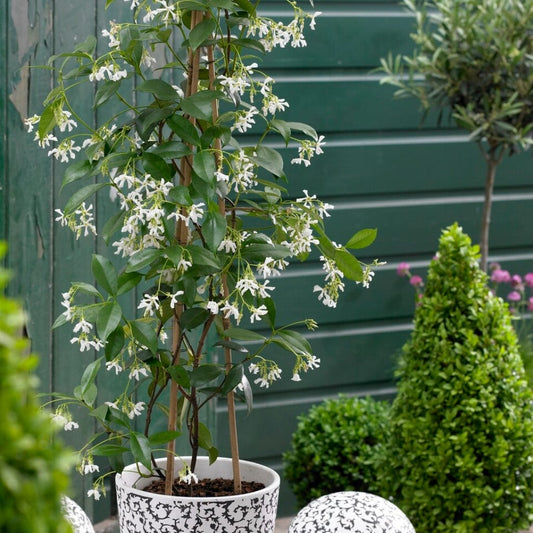Roots' Cotswolds Valley Nursery
Meet Mike
Tree-growing skills honed right across the globe
Having started out in Australia, studied in Northern Ireland and volunteered at an organic farm in Sweden, it’s fair to say Mike’s done his fair share of travel on his horticultural journey, so far! Having happily laid down roots here at Roots, Mike is the don behind our tree-growing operation, imparting each and every one of his globally-honed skills to benefit your garden. Grown in our purpose-built nursery, in the ideal climatic conditions of the fertile Vale of Evesham, we’re proud to supply only the happiest, healthiest and hardiest trees.
Need help picking?
Fan and Espalier Fruit Tree FAQs
What is an espalier fruit tree?
An espalier fruit tree is a trained fruit tree that comprises a vertical central trunk with multiple tiers of horizontal branches. Espaliers are typically trained against a wall or fence, though they can also be grown as freestanding trees using a post-and-wire support system.
What is a fan-trained fruit tree?
Fans are, again, like espaliers, typically wall- or fence-trained fruit trees, but unlike espaliers, they’re grown in a fan shape with multiple branches spread out at various angles to create their distinctive (and highly attractive) shape.
Which fruit trees can be espaliered or fan-trained?
The most suitable fruit trees for espalier training are apples and pears (and also sometimes figs) whilst fan training can be applied to a much wider range of fruits, including both stone fruits (like plums, cherries and peaches) and currants. The reason that stone fruits don’t do well in an espalier shape is that they tend to have more brittle, less pliable branches, vigorous growth and different pruning requirements.
What are the benefits of espalier or fan-training fruit trees?
Both espalier and fan fruit trees offer an attractive (like, seriously beautiful) and productive way to make use of a sunny wall or fence. In fact, with the proper pruning and training, espalier and fan trees can even be more productive than untrained trees. They can also make harvesting your crop of fruit easier and more accessible.
Do espalier and fan-trained trees require more maintenance?
Trained fruit trees, whether we’re talking about espaliers, fans, cordons, stepovers or patio fruit trees, typically require a bit more maintenance than unshaped trees, just to retain their overall shape and productivity. In the case of espaliers and fans, annual pruning will be required (plus some initial training steps if you’ve not purchased a pre-trained tree).
How do I start espaliering or fan-training a fruit tree?
To start an espalier, cut your tree’s central stem to a few centimetres above your first wire tier, then take two side shoots growing from a pair of buds roughly level with the wire or maybe a bit below, and tie them to your framework at a 60-degree angle. In August, lower these to horizontal. You should be left with a central stem growing upwards, and a pair of branches growing laterally to form your espalier’s first tier. To start a fan, you need to cut back the tree’s leader to between 35 and 45cm, cutting just above some healthy buds. Then, come summer, tie those branches that have grown from the buds at various angles (around the 45° mark).
When is the best time to prune espalier or fan-trained trees?
You should prune your espalier in summer, trimming new side shoots from your espalier’s horizontal branches to just a few leaves beyond the basal cluster, and cutting back your older side shoots to a single leaf beyond the basal cluster. The timing for pruning fan-trained trees depends on the fruit in question, but generally it should be carried out in summer (the exception being fig fan trees, which should be pruned in April).
How long does it take for an espalier or fan-trained tree to bear fruit?
Your espalier or fan-trained fruit tree will typically begin to bear fruit after two to three years, though this can vary from tree to tree. Dwarfing or semi-dwarfing rootstocks are often used for espalier and fan-trained trees, and these usually bear fruit faster than more vigorous alternatives.
What spacing is needed between espalier or fan-trained trees?
If you’re growing multiple espaliers or fan-trained fruit trees next to one another, then the spacing you’ll need is (at a minimum) the ultimate width you want your espalier or fan to achieve. This way, they won’t get in the way of one another. As a general rule, however, we’d recommend leaving at least three metres between each tree.
Do espalier and fan-trained trees need special soil or fertilisers?
While espalier and fan-trained fruit trees don’t explicitly require any special kind of soil, they tend to prefer rich, loamy conditions with good drainage. It’s not uncommon for soil at the base of a wall or fence to be a bit poor, so it’s worth working in some garden compost just to give it a bit of a boost before you get to planting. In terms of fertiliser application, a high-potassium fertiliser feed applied during early spring can benefit your espalier or fan-trained fruit tree.
Fighting plastic waste
Delivering fresh from the nursery
Supporting UK growers



















